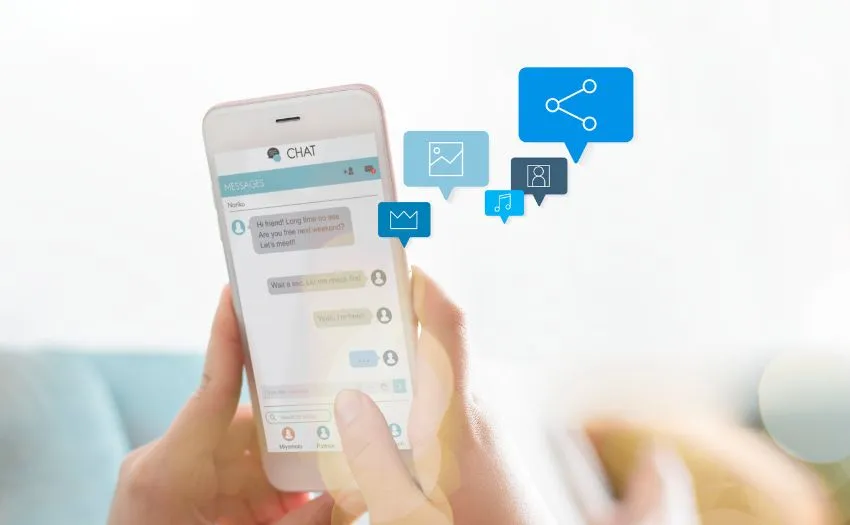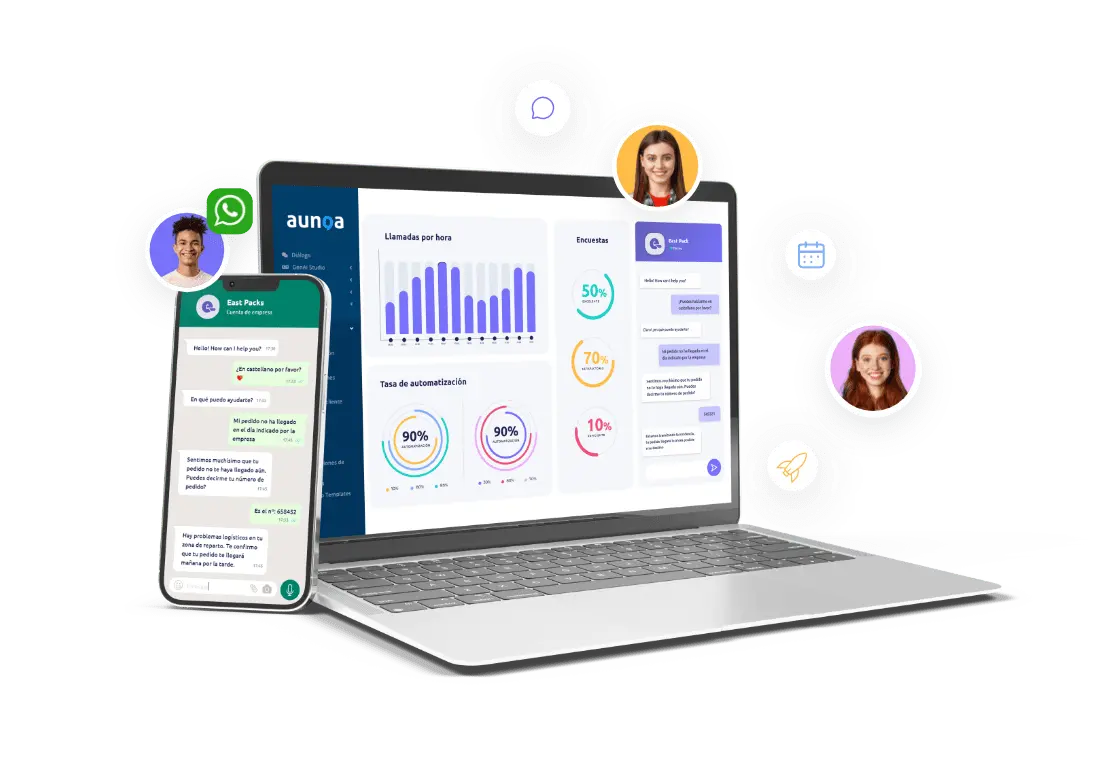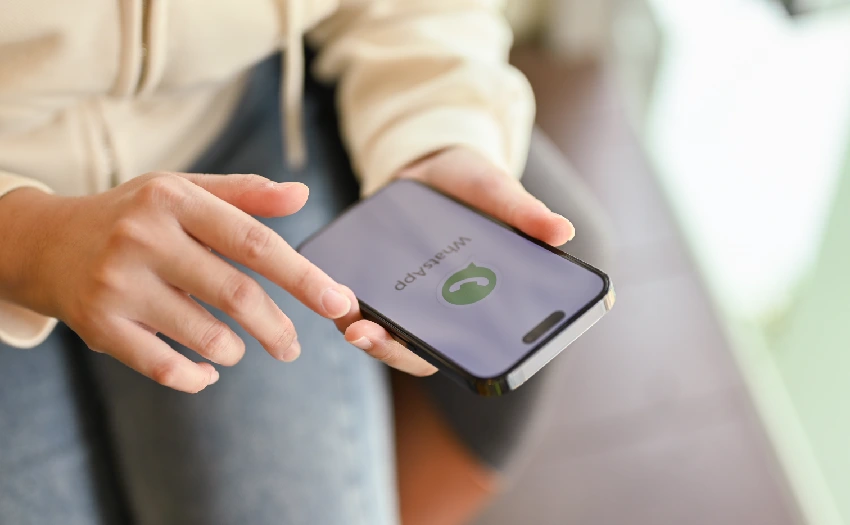The quality of customer service is determined by the diversity of customer service channels available. The efficiency of the management of these channels is the second factor that ensures the quality of customer service and support.
The connectivity of the customer service channels and the correct management of these channels are two other factors that make it possible to offer satisfactory experiences, which will be decisive for customer loyalty and retention.
Companies must ensure that they concentrate their resources on the most important channels, which must be carefully chosen according to customer preferences.
In other words, it is necessary to prioritise the customer service channels most used by customers and diversify them to offer different contact alternatives. Are you offering the right channel or is it time to diversify and promote new digital channels?
In this post we have made a comparison of the main customer service channels so that you can identify which is the right channel to connect with your customers.

Advantages and disadvantages of the main Customer Service channels
Customer Service Channels 1: E-mail
Email is a key channel for customer service due to the growing adoption of the Internet.
However, recent technological advances and changes in user behaviour highlight the limitations that can arise if companies rely solely on this channel to receive enquiries.
Through an email, customers can describe problems and queries in detail as there is no text limit and files such as images, videos or documents can be attached.
Similarly, customer service agents can resolve queries with detailed explanations or documents to guide customers in resolving questions.

This customer service channel allows the recording of all conversations and the digital documentation of all enquiries. In addition, a query can be resolved flexibly, as the response is often not immediate.
In fact, the response time is high and often leads to friction when customers want a quick and effective resolution.
Communication via email is asynchronous, i.e. it is not in real time, and this makes it a channel with response times of up to 12 or 24 hours.
This is a significant disadvantage of email support. The exchange of emails can delay resolution and frustrate your customers.
On the other hand, due to security filters, many emails may never reach your customer’s inbox and end up on a spam list.
This situation can also be caused by email address errors, problems with the email provider, or even if the customer’s inbox is full.
Customer Service Channels 2: Telephone
Real-time conversations allow for immediate responses, eliminating the long wait times of email.
Although customers receive immediate responses, they must wait in line until their call is assigned to an agent. These wait times increase customer frustration and affect the user experience.
These wait times increase customer frustration and affect the user experience.
In addition to online waits, users must interact with automated interactive response systems.
IVR (Interactive Voice Response) technology has the ability to receive a call and interact with the user through voice recordings and recognition of simple answers or number selection.
This technological solution can handle large volumes of calls, but does not suit the preferences of users, who are frustrated when trying to communicate with human agents.
On the other hand, telephone enquiries, unlike e-mails, allow personalisation and offer a closer and more effective service. In this customer service channel, users will not have to wait a whole day for a response.

Support and care agents can guide customers directly through calls, so customers will receive a fast and effective solution.
However, customer service via telephone does not allow for scalability, i.e. agents can only speak to one customer at a time.
This means that if the volume of enquiries increases, it is necessary to increase the number of agents in the customer service team in order to provide quality customer service.
This is the main challenge for companies that focus their customer service on resolving telephone enquiries.
Agents cannot handle large volumes of enquiries and must spend their time dealing with frequently asked questions and repetitive tasks.
Another disadvantage of this customer service channel is the difficulty for customers to access transcripts of telephone conversations.
Companies can only share this information and document calls if they have a CRM or Help Desk software integrated into their business model.
These tools are critical to the quality of customer service, and agents must have access to the call log and detailed customer information to know the history and ensure comprehensive management.
Customer Service Channels 3: Chat / Chatbot/ Virtual Assistant
While telephone handling is sequential, meaning that a human agent can only handle one call through this channel, an online chat can handle up to 4 conversations simultaneously.
Customer Service Chat can overcome the limitations of other customer service channels by combining technologies that enable automation, such as the application of Artificial Intelligence with human supervision.
An online chat or live chat offers many advantages over other customer service channels such as email or telephone.
In addition, by adding a layer of automation thanks to Artificial Intelligence, the simpler functionalities of this conversational channel can be enhanced.
Artificial Intelligence (AI) chatbots have the ability to exchange almost human-like conversations and automate the resolution of frequent queries, offering fast, personalised interactions.

Immediacy is one of the advantages of conversational AI solutions.
Chatbots respond to queries immediately and if they receive a complex query, they can transfer it to a human agent.
Chatbots also eliminate the language barrier as, thanks to Artificial Intelligence, they can identify the language of the query and interact with customers in their own language.
In addition, thanks to PLN, they can also identify the mood of a user and respond appropriately. This has a direct impact on CSAT scores, as customers value personalised customer care.
When we talk about personalised customer care, we also mean handling through new customer care channels. Users now prefer to communicate with companies through new digital channels, such as messaging apps and social media.
AI-enabled chatbots can be integrated into all these channels to centralise management and simplify communication.
On the other hand, unlike telephone enquiries, AI chatbots ensure the scalability of customer service by handling different conversations simultaneously. Customers do not have to wait to be attended to and agents can dedicate their time to other complex tasks and queries.
What is the best customer service channel?
While phone and email support can be useful, customers tend to prefer to resolve queries through self-help channels.
Therefore, companies should implement Chats with a layer of automation across different digital customer service channels.
That doesn’t mean you should replace your customer service agents and disable your email or support form, on the contrary, you should empower them with Artificial Intelligence through chatbots.
This way, you will scale your customer service channels, save resources and optimise automation.
Your customers will receive answers in real time and the quality of your customer service will be reflected in the improvement of your satisfaction indicators.







